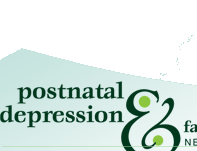 |

Venlafaxine
This section is designed to inform professionals.
(Consumers, see Fact Sheet on Venlafaxine)
Available as Efexor and Efexor XR.
General Usage
- Used in Depression, Anxiety, Generalised Anxiety disorder, Social Phobia.
- Used in obsessive-compulsive disorder, posttraumatic stress disorder and premenstrual dysphoric disorder.
- In depressive illness it is at least as effective as the other main groups of antidepressants.
- Side-effect profile, while better than the TCA’s is not quite as favourable as the SSRI’s.
- In New Zealand, to qualify for full subsidy, two other antidepressants must have been tried before Venlafaxine (Apply to Pharmac)
- Blocks the re-uptake of serotonin (5-HT) and, with somewhat less strength, it also blocks the reuptake of noradrenaline (NA) also known as norephidrine (NE) (see earlier section on action of medications).
Use in Pregnancy
Category C
- There has been one, multicenter case-controlled study (1) evaluating pregnancy outcome following exposure to Venlafaxine in pregnancy (n=150), SSRI’s (n=150), and other drugs (n=150). It revealed no evidence that Venlafaxine increased the risk of major malformations. The doses used were relatively low.
- Studies of neonatal adaptation syndrome are very limited (3) but it is likely that infants exposed to Venlafaxine will experience similar effects to those exposed to SSRI’s (see SSRI’s). This study also examined rates of pregnancy complications and found them to be higher in the group taking medication but unfortunately the groups were not well matched as the other risk factors (alcohol use, smoking) were significantly high in the control group. All the neonatal effects were self-limiting and transitory, starting on day one and mostly resolving by day 3 in term infants and day 5 in preterm infants.
- A study including three women taking Venlafaxine measured amniotic fluid to maternal serum ratios (2). Levels were very variable but much higher for Venlafaxine than for the SSRI’s. The amount ingested by the foetus was, however, small (0.05mg per day).
Use in Breast Feeding
Category L3
- The limited number of studies to date (4, 5, 6) suggests that Venlafaxine is safe in breast feeding.
- The maternal weight adjusted dose is about 6-7% which is within the notional safe level of less than 10%, but is higher than for SSRI’s and may be approaching 10% in some infants.
- No adverse effects were noted in the infants.
Clinical Scenario
A 36 year old woman with a history of moderately severe recurrent depression which has been stabilised on Venlafaxine 225mg, presents requesting your opinion about whether to stay on this medication as she is planning to get pregnant.
Perinatal Psychiatrist;
"Presumably she has been on at least two other antidepressants with either minimal effect or intolerable side effects so a switch to these is not an option.
Did this include a tricyclic? – If not it may be worth considering a change to nortriptyline – but remember that her illness is serious and has the potential to be very disabling. Changing medication runs the risk of destabilising her. Venlafaxine is not known to cause any congenital malformations. It may cause some self limiting neonatal toxicity.
It is essential to meet her partner and discuss the issues openly, inform them of the potential dangers of untreated depression in pregnancy and postpartum(see section on untreated illness, pregnancy) and offer further appointments and follow-up irrespective of whether she decides to continue or discontinue medication. If appropriate remind her of the dangers of cigarette and marijuana smoking and alcohol, which are much greater than the use of Venlafaxine."
References
(1) Einarson A., Fayote B., Sarkar M., et al (2001). Pregnancy outcome following gestational exposure to Venlafaxine: a multicenter prospective controlled study. American Journal of Psychiatry, 158:1728-1730 .
(2) Loughhead A., Fischer A., Newport D., Ritchie J., Owens M., DeVane C., & Stowe, Z. (2006). Antidepressants in Amniotic Fluid: Another Route of Fetal Exposure. American Journal of Psychiatry, 163: 145-147.
(3) Ferreira E., Carceller a., Agogue C., Marin B., St-Andre M., Francoeur D. & Berard A. (2007). Effects of Selective Serotonin Reuptake Inhibitors and Venlafaxine during pregnancy in Term and Preterm Neonates. Pediatrics, 119:52-59.
(4) Islett KF., Hackett Lp., Dusci Lj., et al (1998). Distribution and excretion of Venlafaxine and O-desmethylvenlafaxine in human milk. British Journal of Clinical Pharmacology45:459-462
(5) Islett KF., Kristensen JH., Hackett LP., et al, (2002). Distribution of Venlafaxine and its O-desmethyl metabolite in human milk and their effects in breast fed infants.
British Journal of Clinical Pharmacology, 53:17-22.
(6) Hendrik V., Altshuler L., Wertheimer A., Dunn W. (2001) Venlafaxine and breast feeding. American Journal of Psychiatry, 158(12): 2089-2090.
(7) Koren G., Moretti M., & Kapur, B. (2006). Can Venlafaxine in breast milk attenuate the norepinephrine and serotonin reuptake neonatal withdrawal syndrome? Journal of Obstetrics and Gynaecology Canada. 28(4): 299-302.
|
 |






